What and how to feed raspberries in spring so that there is a good harvest
If you want to get bountiful harvests of large and tasty berries every year, then you need to fertilize raspberries. Naturally, for top dressing to be effective, you need to know when (at what time), how and what to feed raspberries in spring, summer and autumn (after fruiting), so that the shrub is always provided with all the required macro- and microelements.
Well, further, a detailed scheme of feeding raspberries in the spring and summer will be presented to your attention.
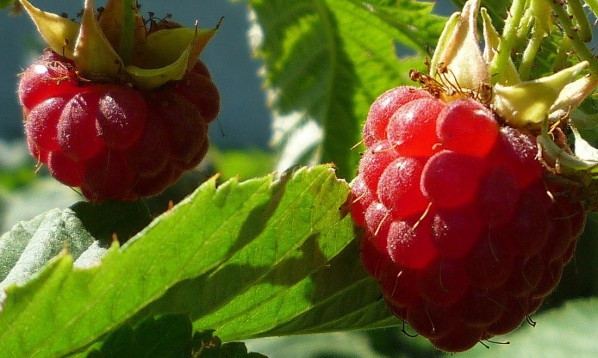
Content
- 1 Why fertilize raspberries in spring: why do you need spring feeding
- 2 When to fertilize raspberries in spring: optimal timing and scheme
- 3 How to fertilize raspberries correctly, what types of dressings are there, their specifics
- 4 How to feed raspberries in spring for a good harvest: options for effective spring fertilizers
- 5 What else needs to be done in the spring to get a good harvest of raspberries
Why fertilize raspberries in spring: why do you need spring feeding
Raspberries, like any other berry bush, are quite demanding on nutrition and, accordingly, sensitive to its lack.
Naturally, the shrub needs the whole complex of macro- (nitrogen, phosphorus and potassium) and trace elements (the most important is magnesium, as well as sulfur, boron, calcium, iron, etc.)
The most important nutrients for raspberries are potassium and nitrogen, but we must not forget about phosphorus (especially after fruiting, although in the period before and after flowering, it is also necessary, but in smaller quantities than potassium).
Due to the lack of phosphorus, the number of ovaries decreases, and therefore, the yield decreases sharply, as well as the sugar content in the berries (they simply cease to be sweet).
Nitrogen - required for active growth of shoots (stems) and leaves.
However! You cannot overdo it with nitrogen fertilizers and use them only before flowering, otherwise raspberries will drive shoots and foliage to the detriment of fruiting.
Potassium - is responsible for pouring berries, namely, it has a direct effect on its size (large-fruited) and sweetness.
In addition, potassium has the ability to increase the immunity of the plant, which means that raspberries will be able to better resist various diseases.
Thus, spring feeding of raspberries, which should include the entire balanced set of macro- and microelements, is performed for the normal growth and development of the plant, in particular to increase its yield (and not only in terms of quantity, but also large-fruited), to improve the taste berries.
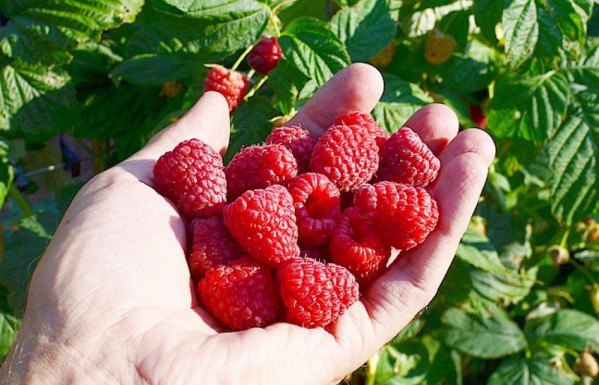
When to fertilize raspberries in spring: optimal timing and scheme
Raspberries should be fed in the spring according to a certain scheme, so it is extremely important to know when and at what time to fertilize. In this case, it is most convenient to rely on certain phases of plant development.
Many experienced gardeners adhere to the following scheme for feeding raspberries in spring and summer (after harvest) or in autumn, focusing on the developmental phases of the shrub:
Note!You should not rush to the first feeding. The roots of the plant still begin to absorb and assimilate fertilizers only at a soil temperature of at least + 5-10 degrees. Although many advise you to apply fertilizer earlier, even over the snow, so that they are absorbed together into the soil when it (snow) melts.
- The first feeding of raspberries is carried out in early springwhen a positive temperature is established (the snow begins to actively melt or has already melted) and the shrub begins to wake up (its buds begin to swell), that is, after you cut, loosen and weed the bushes from weeds.
At this point, the plant needs a lot of nitrogen to build up green mass. Ammonium nitrate or urea is your choice. Alternatively, you can, in principle, apply a complex fertilizer such as nitroammofoska.
- Just before flowering (during budding).
In order for raspberries to gain weight - to be large and sweet, they need more potassium and phosphorus. That is why the composition of the top dressing must necessarily include potash and phosphorus fertilizers, as well as a little nitrogen (but much less than during the first top dressing). You can still use nitroammophos, but diammophos is better.
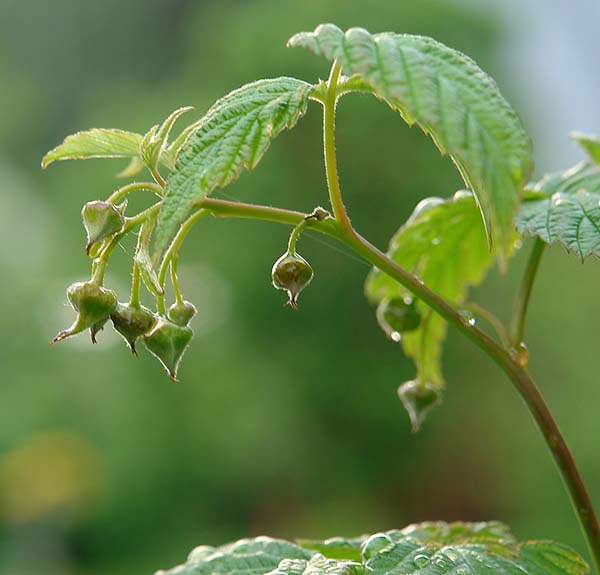
- During flowering and the beginning of fruiting.
During this period, it is recommended to use more potassium and phosphorus, then the berry will be sweeter, stronger and more aromatic.
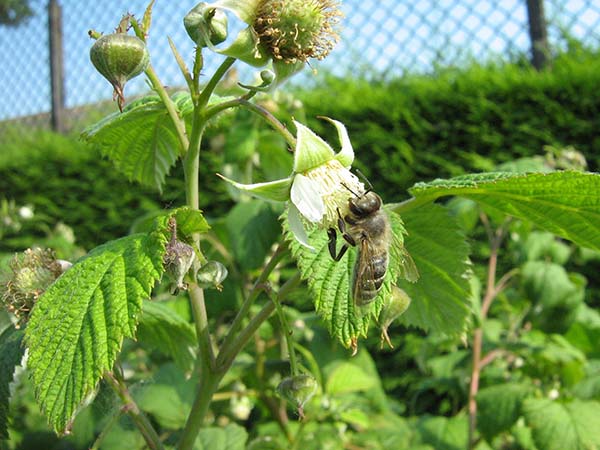
- After fruiting and harvesting (late summer-autumn).
The purpose of the last feeding is for the raspberries to set flower buds = prepare for the next harvest, and also harden before wintering, in other words, so that they do not freeze.Therefore, the shrub requires phosphorus and potassium (as an option, superphosphate and potassium sulfate or just potassium monophosphate).
By the way! The site has a detailed article about how and what to feed raspberries after fruiting and harvesting (in autumn).
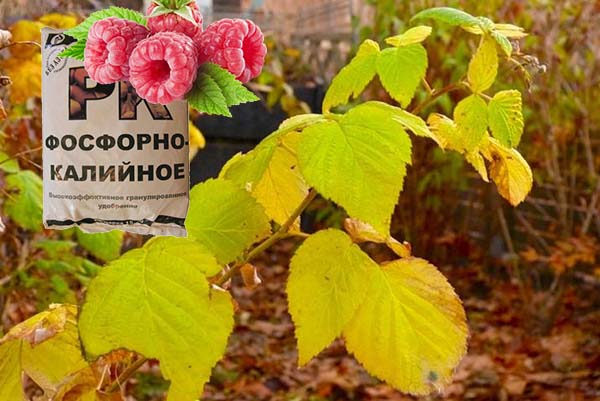
Video: a variant of the raspberry feeding scheme
How to properly fertilize raspberries, what types of dressings are there, their specificity
Basic rules and recommendations for spring fertilization of raspberries:
- Raspberries planted last year do not need to be fertilized in the spring if sufficient nutrients = fertilizers have been added to the soil during planting.
They begin to feed only after 2-3 years, since only by this time the plants will have pulled out of the soil all the nutrients introduced during their planting.
- Before feeding raspberries, it is recommended to first spill the bushes with plain water, because it is always necessary to fertilize on wet soil, especially with mineral fertilizers.
By the way! You can water it a day or 1-2 hours before applying liquid dressing.
- If during root feeding you get on the leaves and fruits, then try to irrigate (lightly rinse) with plain water.
- Top dressing is desirable in the morning or evening hours, but not at noon, when the sun is at its zenith, or you can choose a cloudy day.
Advice! Any granular mineral fertilizer (special superphosphate) better pre-dissolve in a separate container in hot water (you can use boiling water), since granules, as a rule, dissolve in cold water rather poorly and slowly.
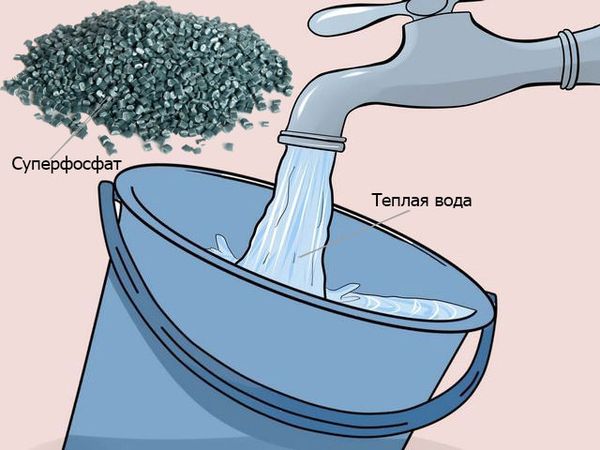
Methods or types of feeding
Exists 2 ways or type of feeding any plant (including raspberries): root (watering at the root) and foliar (by leaves). Let's take a closer look at each of them.
As a rule, it is in the spring major root dressing (more often in liquid form, but it is also possible in dry form - scatter the granules and cover them with earth. Further, the fertilizers will gradually dissolve during watering or rains). But already in summer can be done and foliar feeding (by leaves).
Root dressing
Root dressing involves applying fertilizer directly under the raspberry bushes or at some distance from them.
It is recommended to distribute fertilizers along the diameter (perimeter) of the bushes, making small depressions, so to speak, grooves (holes), and then adding ground.
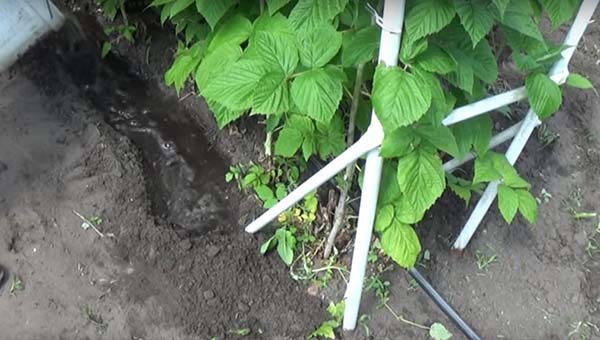
For root dressing, as a rule, mineral fertilizers with macronutrients, as well as organics.
Foliar dressing
Fertilize raspberries in the spring for abundant fruiting = harvest can be done not only at the root, but also by the leaves.
Note! It is believed that foliar dressing is most effective when the plant especially needs certain trace elements (which is manifested in its appearance), in other words, they are carried out as needed.
Thus, foliar dressing, as a rule, is carried out with the help of fertilizers, which include trace elements.
Obviously! Foliar dressing cannot completely replace root dressing. Therefore, the root is the main dressing, and the foliar is additional (if necessary).
How to feed raspberries in spring for a good harvest: options for effective spring fertilizers
Naturally, before buying and fertilizing, you need to figure out how (with what fertilizer) you can and better feed raspberries in the spring.
As with many other crops, both mineral and organic fertilizers can be used to feed raspberries.
Next, we will take a closer look at when and what fertilizers can be used, as well as how to combine them so that the shrub receives all the necessary nutrition.
Note! It is not necessary to apply potash and phosphorus fertilizers under raspberries. (for example, potassium chloride, potassium salt and diammophos). Such feeding can provoke plant disease. chlorosis.
By the way! Almost all berries are very sensitive to an excess of chlorine, in particular red and white currants, wild strawberries (strawberries), grapes, to a lesser extent - black currants and gooseberries.
Nitrogen feeding
Remember! Applicable only 1 time, in early spring.
Mineral nitrogen fertilizers:
- Urea (Urea) - 46% nitrogen (20-30 grams per 10 liters of water or per 1 sq. M);
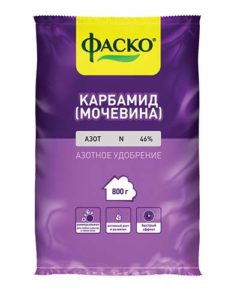
By the way! Many gardeners recommend feeding raspberries for the first time in early spring, even in the snow, with urea (carbamides).
- Ammonium nitrate - 33% nitrogen (30-40 grams per 10 liters of water or per 1 square meter);
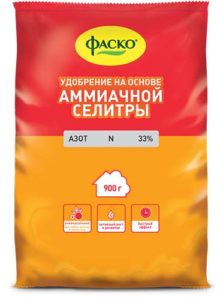
Organic nitrogen fertilizers:
- chicken droppings (as a rule, 1 in 20 with water, or you can simply sprinkle in the near-trunk circle);
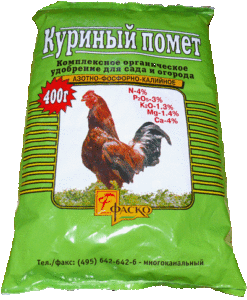
By the way! Please note that purchased poultry manure contains the entire range of macronutrients, as well as some trace elements.
Video: feeding raspberries in spring with chicken manure
- infusion cow dung or mullein (1 in 40);
- green manure (i.e. infusion of nettle).
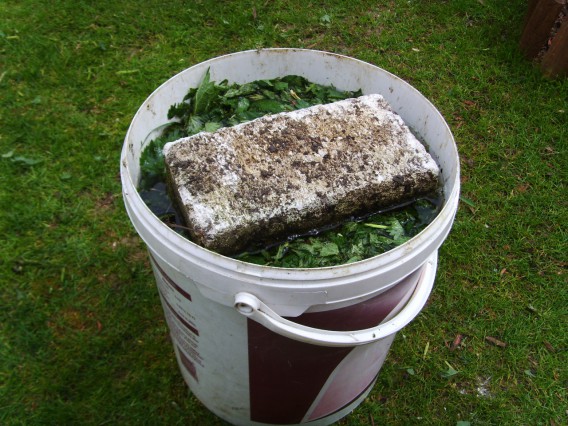
It is also very good to mulch the trunk circle. compost or humus.
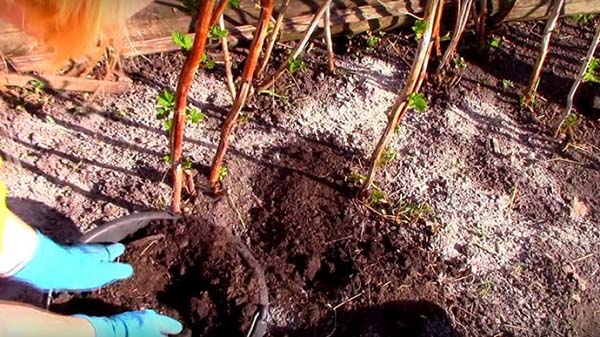
Complex mineral dressing
It is very convenient to use complex mineral fertilizers, which contain all the macronutrients.
So, raspberries in the spring (before flowering) can be fed with the following complete mineral fertilizers:
- Nitroammofoska (nitrogen, phosphorus, potassium - 16% each). Prepare the solution at the rate of 20-30 grams per 10 liters of water.
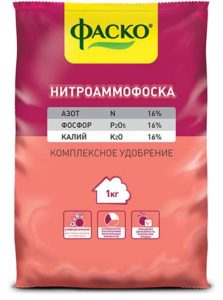
- Diammofoska - 10% nitrogen, 26% phosphorus and potassium each (20-30 grams per 10 liters of water).
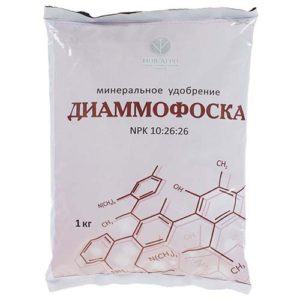
Note! The composition of these fertilizers does not include any trace elements, and it is very desirable to add them. Therefore, it is highly recommended to add humates to the solutions, which are described in more detail later, in the last paragraph.
Mineral and organic potassium-phosphorus feeding
Suitable for feeding before and after flowering, as well as in autumn.
Mineral:
- Superphosphate - nitrogen 6-9%, phosphorus - 26-30% (20-30 grams).
Advice! The site has a separate article about how to apply superphosphate.
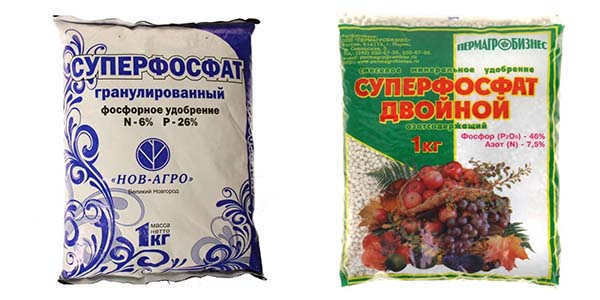
- Potassium sulfate (potassium sulfate) - 46-52% potassium (30-40 grams).
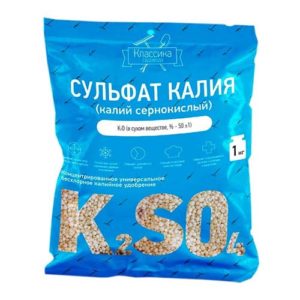
All (superphosphate and potassium sulfate) dissolve and mix in 10 liters of water, and then pour 5 liters of solution under each bush.
Video: feeding raspberries in the spring with superphosphate and potassium sulfate
By the way! Instead of potassium sulfate (potassium sulfate), you can use potassium nitrate (Nitrogen -13.6, Potassium 46%).
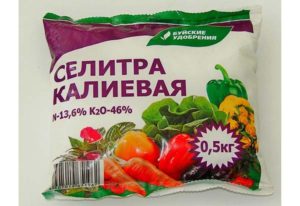
And it is also very convenient to use kalimagnesia, which, in addition to potassium (32%), contains such an important trace element as magnesium (12%).
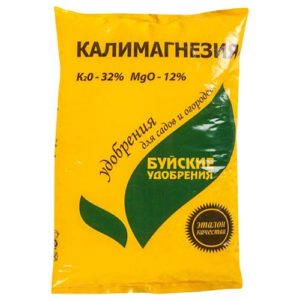
Organic potassium phosphorus supplement
If you proponent of organic farming, then you can as potash feeding use wood ash, having prepared the following solution (or even better infusion-extract): 100-200 grams of ash per 10 liters of water, and then pour 5 liters under each bush.
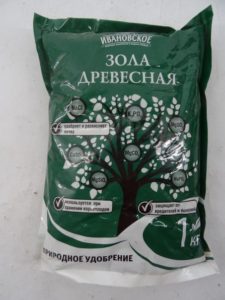
Concerning phosphorus, then it is in the same bone or fish meal (100-200 grams per 1 square meter).
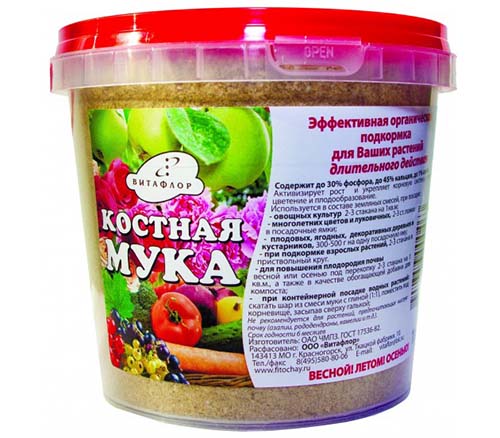
Video: phosphorus fertilizer for shrubs (bone meal)
Rapidly assimilated phosphorus supplement
Suitable for feeding before and after flowering (during fruiting).
To make an easily digestible infusion superphosphate for spring feeding raspberries you need:
Take potassium monophosphate, dissolve in water and fertilize. However, it is not always possible to find it in the store, and it costs a lot.
Therefore, you can prepare it from superphosphate (preferably double):
- 1 kg double superphosphate pour 5 liters of boiling water;
- after the water has cooled, add 0.5 liters of 9% vinegar;
Acidifying the water will help convert the calcium phosphate to a more soluble form.
- Let it brew for 12-24 hours, shaking and stirring occasionally.
- Add another 5 liters of water, bringing the total volume to 10 liters.
- Then dilute 1 liter of the superphosphate infusion with 10 liters of water (1 to 10).
- Carry out top dressing.
Advice! The remaining phosphorus sediment can be dug under the fruit trees.
Autumn potassium-phosphorus fertilizing (after harvest)
An excellent option for feeding raspberries after fruiting and harvesting (i.e. at the end of summer - closer to autumn) can be the following combinations of mineral and organic fertilizers.
By the way! The site has a detailed article about how and what to feed raspberries after fruiting and harvesting (in autumn).
First option:
- Superphosphate - nitrogen 6-9%, phosphorus - 26-30% (20-30 grams per 10 liters of water).
Advice! The site has a separate material about how to apply superphosphate.

- Potassium sulfate (potassium sulfate) - 46-52% potassium (15-20 grams per 10 liters.

Second option:
- Nitroammofoska - 2 tbsp. spoons (25-30 grams).
- Wood ash - 1 glass (100-200 grams).
Third option:
- Diammofoska - 10% nitrogen, 26% each phosphorus and potassium (20-30 grams).

Fourth option:
- Potassium monophosphate (Phosphorus - 50%, potassium - 33%) - 15-20 grams;
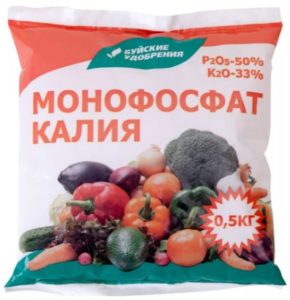
Dissolve everything, mix in 10 liters of water and pour 5 liters of solution under each bush.
Fertilizers for raspberries
If you do not want to bother (you are a "lazy" summer resident), then you can buy one of the special complex fertilizers for raspberries (berry bushes), which already contains all the macro- and microelements (all apply and dilute according to the instructions on the packages):
- Gumi-Omi "Berry" for raspberries, strawberries (garden strawberries), currants and other berry bushes (based on chicken manure).
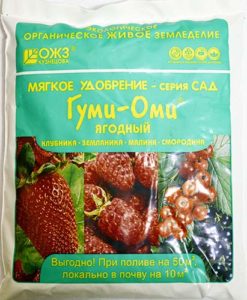
- Specialized fertilizers are especially popular prolonged action (granular, it is advisable to add them dry into holes along the diameter of the bushes, and then water). For example, "Berry bushes»From Fasco.
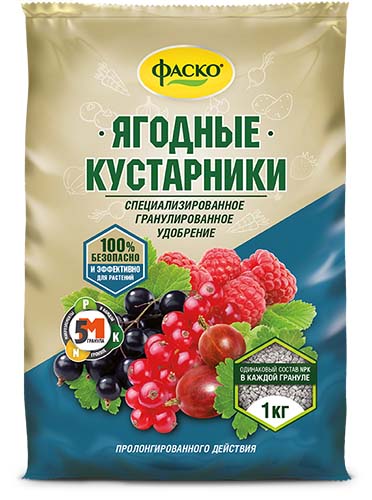
- other.
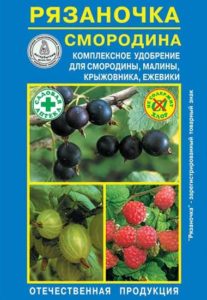
Fertilizers with humates and microelements
Very good to use humateswhich promote better absorption of mineral fertilizers. Therefore, you can first prepare a humate solution (for example, Potassium humate), and then add a complex mineral fertilizer to it, for example, the same Nitroammofosk.
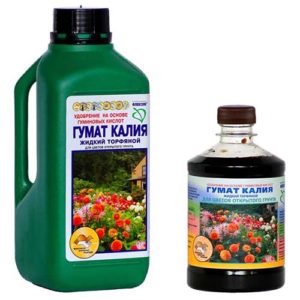
By the way! Now humates are initially added to some complex mineral fertilizers. For example, "Strong " from Fasco with potassium humate and trace elements.
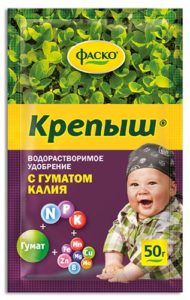
In general, it is very convenient to use for feeding raspberries ready-made cocktails with essential microelementstype Humate +7 Iodine.
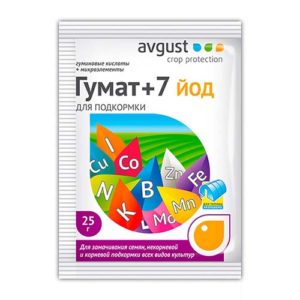
Folk remedies
Yeast is very popular among folk remedies for feeding raspberries.
This is best done before flowering.
- 100 g of fresh yeast (or 30-35 grams of dry yeast, i.e. the ratio is 1 to 3) and 100 grams of sugar are dissolved in 5 liters of warm water and insisted for 1-3 days (to start the fermentation process), while not forgetting stir periodically. Then the resulting stock solution is diluted 1 in 10 with water, poured into a watering can and abundantly watered (pouring out about 5 liters) each plant.
Important! Adding yeast to the soil negates the presence of potassium in the soil (dissolves it), so after about a week add a potassium supplement, for example, feed wood ash or potassium sulfate (potassium sulfate).
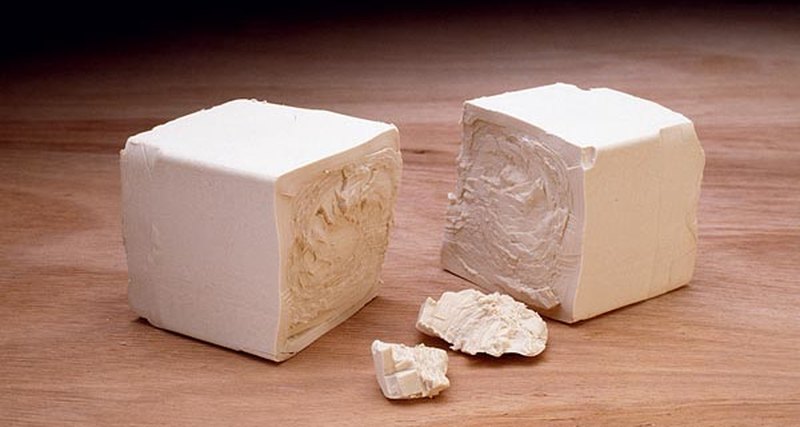
Video: feeding raspberries with yeast
And on the Internet you can find many recommendations that ammonia (ammonia solution) has a very good effect on raspberries, working both as a remedy against diseases and pests, and as a nitrogen supplement.
Advice! The site already has detailed material about how to properly use a solution of ammonia for plant nutrition (including raspberries).
Video: ammonia - super means to increase the harvest of raspberries
What else needs to be done in the spring to get a good harvest of raspberries
The spring raspberry care measures include the following:
- opening after winter (removal of the winter shelter);
- spring pruning;
- transplant (if necessary);
- loosening and weeding;
- watering;
- mulching;
- directly feeding;
- garter;
- processing raspberries from diseases and pests.
By the way! The site also hasgeneral detailed article on spring raspberry care.
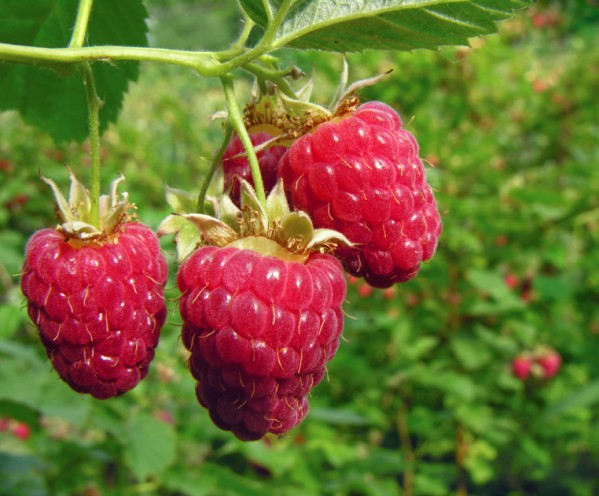
Video: caring for raspberries in the spring - pruning, loosening, garter, feeding
Thus, in order for the raspberry bush to thank you with a generous harvest, you definitely need to regularly feed your raspberries in the spring and summer-autumn period. It is not so laborious, but you will definitely appreciate the result. You just need to know exactly when, how and what, in other words, to act according to the instructions given in this material.


Thank you. Very accessible and detailed. I will use your advice.